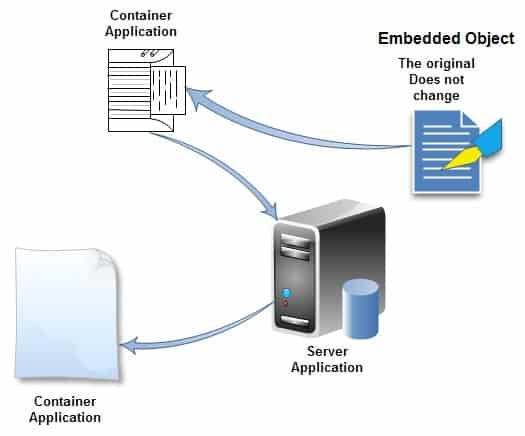Definition of Object Linking and Embedding (OLE) in Network Encyclopedia.
What is Object Linking and Embedding (OLE)?
OLE stands for object linking and embedding, is a feature that allows users to create and edit documents that contain objects created by different applications.

For example, you can embed bitmap images, sound clips, spreadsheet files, and other objects in Microsoft Word documents.
You can use OLE to embed an Excel spreadsheet into a Word document. The spreadsheet will be displayed as an object within the Word document and can be edited directly within the document. Changes made to the spreadsheet will be reflected in the Word document and vice versa. OLE also allows users to link objects in a document to the source file. This means that any changes made to the source file will be automatically reflected in the linked object within the document.
The term “object linking and embedding” comes from these two types of actions for creating compound documents:
- Linking adds a link in a document that points to source data stored somewhere else. Linked objects are stored in the document as a path to the original linked data, usually a separate file from the container document.
- Embedding, on the other hand, adds one document directly to the other. Embedded objects are stored with the document that contains them.
OpenDoc technology tried to compete with OLE. Some of Microsoft’s competitors considered OpenDoc to be more robust and easier to use; however, OpenDoc does have some known problems. OpenDoc allowed users to view and edit information across applications, directly in competition with Microsoft’s proprietary OLE standard. In 1993 some Microsoft competitors established a consortium called the Component Integration Laboratories (“CIL”) to develop OpenDoc as an open standard for cross-platform linking and embedding.
Microsoft required OLE compatibility as a condition of Microsoft’s certification of an application’s compatibility with Windows 95. Microsoft initially announced that applications using OpenDoc would be deemed compatible with OLE, and would receive certification for Windows 95. Microsoft later reversed the decision and said that applications using OpenDoc might not receive certification at all. Microsoft withheld specifications and debugged versions of OLE until after it had released its competing applications.